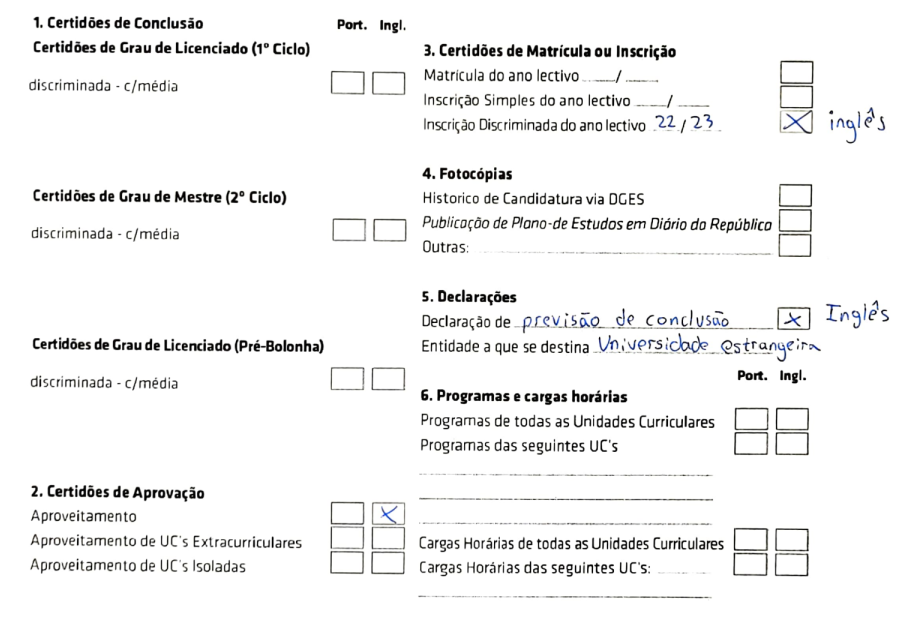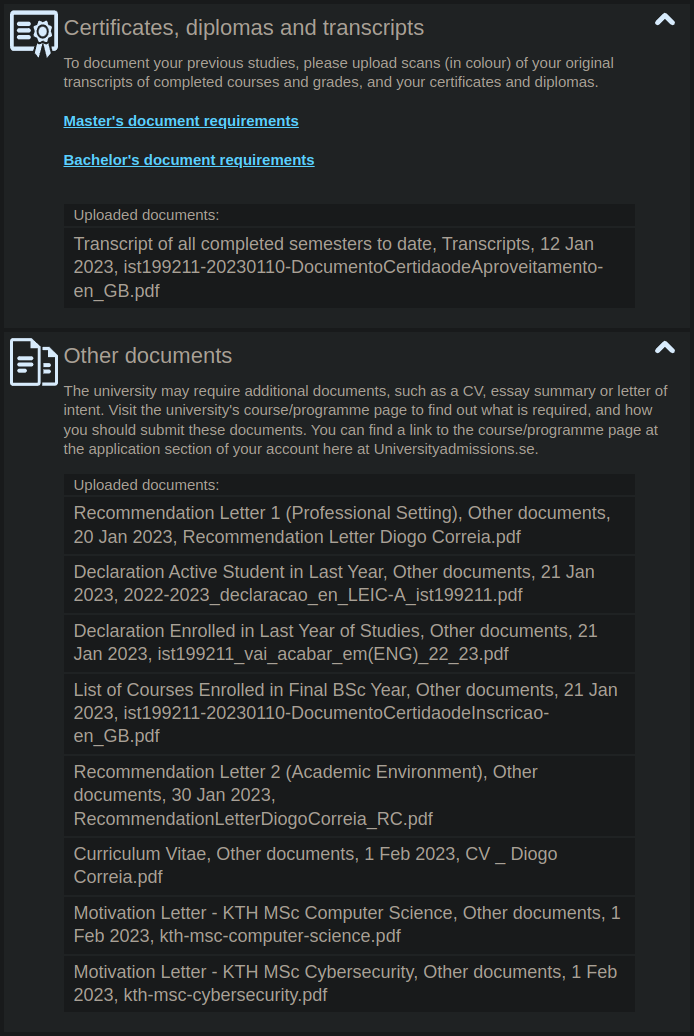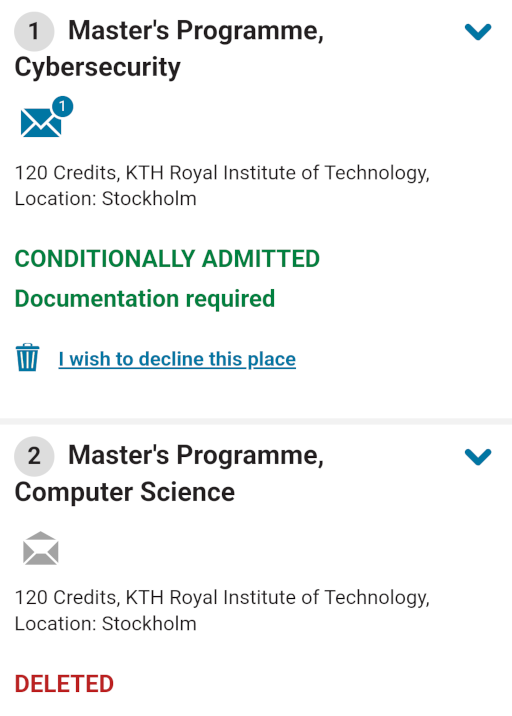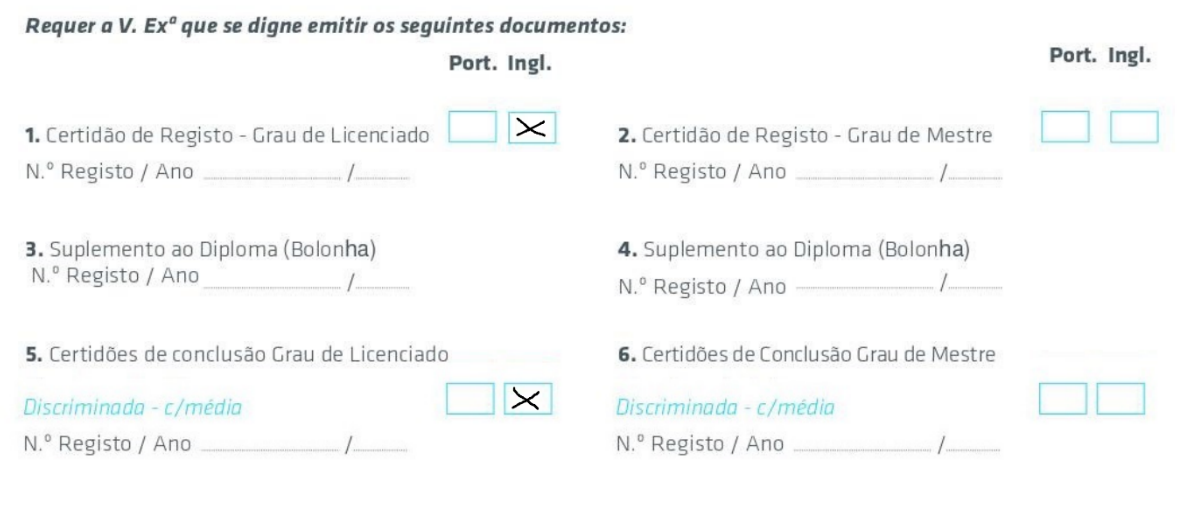From IST to KTH: How I Ended Up Studying Abroad in Sweden
2024-01-14 · 17 minute readA little over a year ago, due to my own interests but also some peer pressure from my friends and family, I started thinking about the possibility of studying abroad, either for the whole master’s, or only for one or two semesters. This is the story of all the twists and turns in my journey to end up studying in the MSc Cybersecurity at KTH, in Sweden.
How It Started
During the summer break, some of my friends started discussing studying abroad. Initially, I was just reading the messages they were sending while they investigated the various universities they were interested in applying to, but eventually I started doing some research myself. Interestingly enough, while KTH was mentioned at the time, I had not considered it as one of my choices, which mostly consisted of universities in the Netherlands.
As weeks came and went, I got drowned in assignments and pushed aside submitting any applications, mainly due to dreading the work involved with getting all the legal paperwork necessary. Looking back, getting the required documents was not that big of a headache all things considered (more on that later).
Around October, some of my friends started considering doing Erasmus instead. It was a very appealing proposition: I would still get the experience of studying and living abroad (and moving out of my parent’s house), while enjoying a hassle free application (it would be just a few clicks in my university’s website). Granted, it would not look as good on my CV as a full-blown master’s abroad, but it would still be relevant. Furthermore, at the time I had considered doing it for two semesters and not just one (and, as far as I was aware, it would be possible). For this reason, I was mostly interested in doing Erasmus starting in the first semester of my master’s, in order to avoid doing the thesis abroad.
Taking into the account the available destination universities from previous years, I ended up picking UvAmsterdam, TU/Delft and TUMunich as my top choices. Again, at this point, despite being one of the options, KTH was still not on my radar, mainly because of me never having heard of it.
Where It All Fell Apart
With everything already planned and ready for the Erasmus applications on the 3rd of January of 2023, there was nothing to do but wait (and enjoy the deserved Christmas break!). After all, what could go wrong? A lot, it turns out.
To have the necessary context of what happened here, we need to go back to 2021, when a structural change of the programmes was introduced at my university, Técnico Lisboa (IST), called MEPP. Amongst other (controversial) changes, the 5 year bachelor’s + master’s programmes were broken apart into 3 and 2 year programmes, respectively. Perhaps the most notable consequence was that students are no longer guaranteed a spot on the master’s, and instead have to apply if they want to continue their studies after the bachelor.
You might already see where this is going.
Even though we had enrolled in the bachelor in 2020, before these changes were implemented, and therefore had a guaranteed spot on the master’s due to the transition, our eligibility to do Erasmus in the first semester was still dubious. With this in mind, and knowing that the class one year older than us had had the same problem the year prior, my friends and I decided to reach out to both the Mobility Coordinator for our programme, as well as the Mobility and International Cooperation Office (NMCI) at our school, well in advance (around October/November). After exposing our exact situation, and highlighting the problems from the year prior, they both said we would be allowed to do what we were planning to. While my friend contacted the Mobility Coordinator by email, another friend and I went in person to NMCI to ask our questions, and ended up not having any record of that conversation.
On the 3rd of January of 2023, all hell broke loose when the applications opened and were accompanied by a note published the day prior by the school, saying that having completed 30 ECTS of master-level courses would be required to apply. Upon hearing the news, we were, understandably, feeling angry, upset, betrayed, and a myriad of other emotions that no words could describe (I might be exaggerating a bit, but we were pretty mad). We were clearly not the only ones, since there was an Erasmus Q&A Zoom session hosted by NMCI a few days later, where other students also demanded to know why they were not being allowed to apply.
On that same day, one of my friends just decided he was going to apply to KTH, as it was the closest deadline and there was no application fee (for EU students). After considering all my previous research, I promptly followed suit, with plans to apply to TU/Eindhoven and TUMunich if I did not get accepted, given their application deadlines were after KTH’s results publication. Also, I excluded both TU/Delft and UvAmsterdam from my list of options since the former required that I did the GRE (a General Test, that would require further monetary investment and time) and the latter required a bachelor thesis, which we did not have at IST.
The Application Process: Speedrun Edition
With less than a month to go, two friends of mine and I started gathering all the required documents. While the application itself (i.e., picking which programmes we were applying to) had to be done by the 15th of January, documents could still be submitted until the 1st of February.
The first step was to book an English exam. I opted for the IELTS Academic since one of my friends had already picked that one and, more importantly, I would get the results before the end of the month. For that reason, I booked the test for the 22nd of January and got the results on the 26th. However, I was later made aware that taking the C2 Proficiency (CPE) exam at English Exam Centre would have been cheaper, but I’m not sure if I could have gotten the results on time.
The second challenge was to get all the required legal documents from our university, since IST’s Graduate Area (AG) is notorious for being slow. Therefore, on the 6th of January, my friend and I went to their office in person and, after waiting 2 to 3h in the queue, we got information on what documents we needed to request and their cost.
[ Note: the information below is subject to changes, so take it with a grain of salt ]
There were four documents University Admissions, the website used to apply to any Swedish university, asked of us, considering that we were still in the last year of our bachelor’s:
- A transcript with all courses completed to date, including their respective grades (40€);
- A list of the courses we were already enrolled in (0€, since it was the first time);
- A declaration stating we were enrolled in the bachelor’s in that specific academic year (0€, available to all students in the Fénix Drive at the beginning of the year);
- A declaration stating that we were in the last year of the bachelor’s and would finish that same year if we completed all courses we were enrolled in (10€).
I’m unsure if the last document is required, but that’s what the Graduate Area advised us to send.
One thing to note is that, while the University Admission’s website states that the documents must be in Portuguese and then officially translated, we asked them and it turns out we can just submit the documents in English, which IST provides, so we did. Additionally, since the first semester had not finished yet, the grades in the transcript were only up to the second semester of the second year.
For future reference, to get these documents, one needs to fill out R01 - Requerimento Certidão as in the picture below, and send it to AG’s email address:

To our surprise, we got the documents quite quickly, having submitted the request on the 6th and received them on the 12th. With the bureaucratic stuff out of the way, we now needed to focus on the recommendation and motivation letters.
Now is where things will differ depending on the programme. Both the MSc Cybersecurity and MSc Computer Science I applied to required two recommendation letters, ideally one from a professional setting and another from an educational one. Since I worked at DSI (the Computer and Network Services at IST) at the time, I asked my direct supervisor for a letter. If you are not lucky enough to have professional experience yet, I’m sure two academic letters would be just fine as well. Picking a teacher to ask a recommendation letter was more complicated, but I ended up asking the teacher of the Computer Networks course, which I was still attending at that date. One thing to keep in mind while submitting these recommendation letters is that they must have contact details of the referees’, such as their email, phone number and address (but you can probably get away with just the email), as well as their name and job title.
Lastly, we needed to write our motivation letters and our CV. This was obviously the most personal part of the application, and while it was a bit of work, it was easy to do with the time we had left. Additionally, KTH’s student blog has some tips for writing motivation letters, which guided us through it.

In addition to the documents above, most programs at KTH require you to submit a summary sheet, through KTH’s website, which is basically a form with some additional information about your academic curriculum.
With everything submitted, on February 1st, all that was left to do was to sit back and wait (for the next two months).

Failed Side Quests
In an effort to decrease the total costs of this adventure, I decided to apply to two scholarships here in Portugal, Postgraduate Fellowships Abroad by the “la Caixa” Foundation and Programa de Bolsas Huawei. Unfortunately, I did not pass the preselection stage for any of them, but it ended up not being a huge problem since tuition is free in Sweden for EU citizens.
Additionally, while we were investigating KTH, we came across the CLUSTER consortium, of which both IST and KTH are a part of (at the time of writing). When we were applying, there was a “Mutual Recognition of Titles” agreement, which stated:
[…] students with a Bachelor degree from a CLUSTER university will be treated for admission to a Master’s program in another CLUSTER institution in the same way as the local students of this institution. […]
We thought this could give us an advantage in the application, but after asking around, both at IST and at KTH, we did not get any satisfying response. To further solidify the answers we got, it seems that this agreement has been withdrawn from CLUSTER’s website since.
During the month of January, I also started the application process to TU/Eindhoven, but I did not plan on submitting it until after KTH’s results were out.
The Big Day
With the results publication day rapidly approaching, we were getting excited! On the 15th of March, after 1.5 months of radio silence, the admission page changed to show that we were conditionally qualified on one of our applications, meaning all the documents were correct, but we still had to finish our bachelor’s. Then, the day after, the same thing happened to the other programme. It was quite a relief seeing that we had done everything correctly, but we still had 15 more days of waiting ahead of us.

Then, on the 28th of March, two days before the results, University Admissions started showing the message “YOUR APPLICATION IS LOCKED AS SELECTION IS CURRENTLY BEING RUN”. Nerves were racking up at this point, and I could barely wait the remaining 48 hours.

Finally, the big day arrived. On the 30th of March, as I was taking the metro to go to university, at around 8:30 in the morning, I got a message from my friends saying the results were out. I opened the University Admissions website, that I had been furiously refreshing since I had woken up, and… nothing. It looked exactly the same as last time. After a few moments of confusion and some messages back and forth, I realised that I had to log out and log back in to be able to see the results. And sure enough, after I did that, I was presented with a wonderful green message saying “Conditionally Admitted”! Hooray!

With a huge sigh of relief, the three of us had been admitted to our first option!
In Search for Accommodation
After the news wore off, we started tackling the task of moving to a new country. This included flights (which we booked in April, and managed to get a pretty good deal on the first flight, getting an executive ticket at the same price of the economy one, allowing us to take 2 checked bags plus a hand bag, which turned out to be immensely useful), but also finding a place to stay during our studies.
Since we were EU citizens, we could not get accommodation through KTH and instead had to find our own. Therefore, our first thought was to find a place for the three of us through the private market, so we searched on Qasa, but, unfortunately, we could not find anything that was both affordable and close to campus.
Fortunately, we had two other options that were geared towards students, Akademisk kvart and SSSB. While we did not explore the former a lot, we had actually created an account with SSSB back in January, which offers unfurnished corridor rooms and apartments, so we were already accumulating credit days (up to a total of 90, which is the maximum you can get without starting your studies). Even though signing up in January is more than enough to have the 90 days by the summer, we later found out that the tie breaker seems to be when you signed up to the queue (I’m not actually sure, the wording on the website is a bit confusing), so perhaps that turned out to be of great help. Around June, listings for corridor rooms started to show up on their website. Since we were allowed to pick 3 different rooms per booking period (which lasted about half a week), we started by trying out various areas near KTH’s main campus, but quickly realised it would be pretty difficult to get one that way. For that reason, we experimented with applying for rooms a bit further away, around 25-30 min by metro from campus, and, surely enough, after a few tries we all got one in the same building.
Remaining Documents
After finishing the bachelor, we had until the 31st of October to submit our diploma (or equivalent). Anticipating the closure of the Graduate Area during the first half of the month of August, we sent the requests right after we got all of our grades on Fénix (IST’s learning management system), on the 11th of July.
For future reference, the diploma is called “Certidão de Registo” (38€), but it takes about a year to be issued. Since we did not have that time, we had to request a “Certidão de Conclusão” (60€), which has all the required information and is issued in a maximum of 90 working days, but can only be requested alongside the aforementioned diploma.
To get these documents, one has to fill out R03 - Requerimento Registo de Grau as in the picture below, and send it to AG’s email address:

About a month later, on the 16th of August, I got the document I needed and submitted it to University Admissions, and, a few days later, my application status changed from Conditionally Admitted to Admitted.
Bye, Portugal
Following a few days of packing and sobby goodbyes, we got on our plane to Stockholm. Once we arrived, we picked up our keys at our house caretaker’s office (for which we had scheduled an appointment beforehand) and went into our (very empty) rooms.

Then, the day after, we went to KTH to get our accounts set up at KTH Entré.

There are, obviously, a lot more stories to tell about the move-in process, and about my experience at KTH so far, but those will not fit into this blog post.
Final Thoughts
All things considered, I have to thank IST for unintentionally pushing me to pursue this amazing opportunity that I almost let through due to laziness. I have zero regrets of the choices that I made regarding my master’s, and I am enjoying my time at KTH and in Cybersecurity so far. Furthermore, I have to thank my friends and family for supporting me before, during and after the application process and this entire journey.
As a final note, if you, the person reading this, is in the same position as I was a year ago and is applying to KTH, I hope that this post helped you and I wish you good luck in your application process. Feel free to get in touch if you have any questions and, if you get in, hit me up for some fika. 🇸🇪